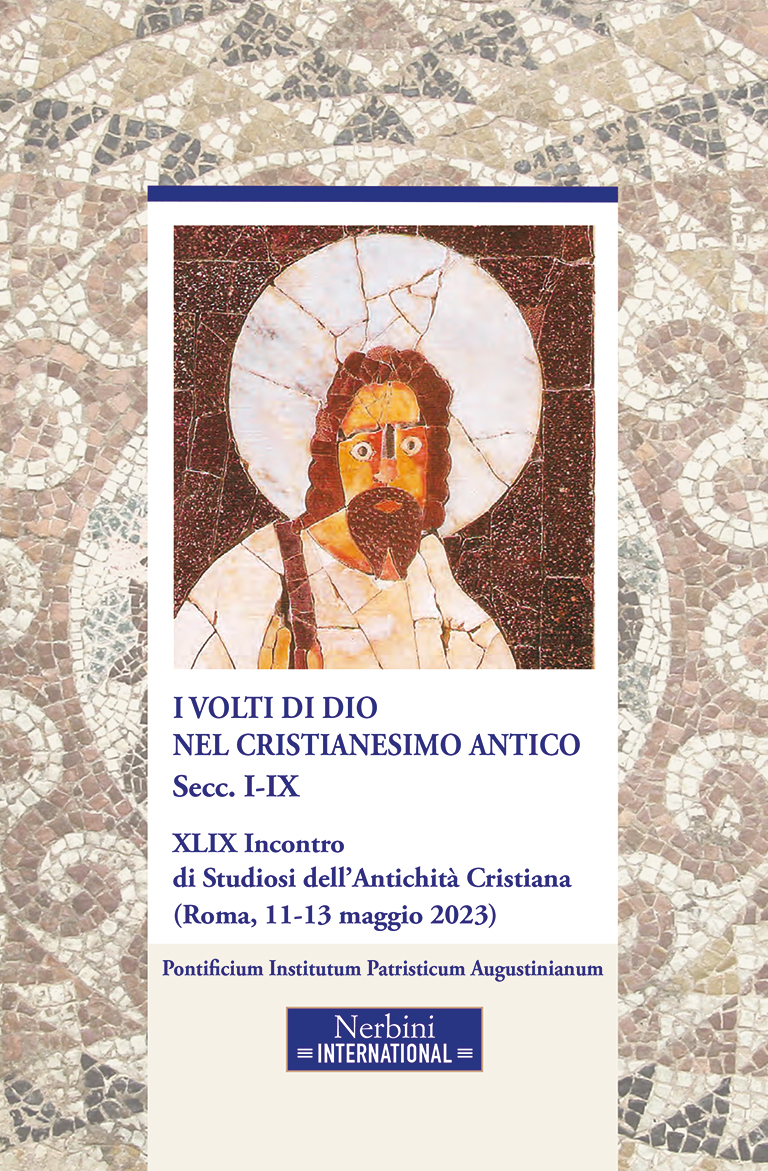I volti di Dio nel Cristianesimo antico (Secc. I-IX) – SEA 165
XLIX Incontro di Studiosi dell’Antichità Cristiana (Roma, 11-13 maggio 2023)
Contributi di Roberta Franchi, Francesca Simeoni, Antonio Stefano Sembiante, Matteo Poiani, Pablo Argárate, Daniel Lemeni, Francesco Aleo, Giovanna Martino Piccolino, Emiliano Faccio, David Vopřada, Calogero Calemi, Marcin Wysocki, Gianmarco Falcone, Alberto Nigra, Leszek Misiarczyk, Alfio Giovanni Cristaudo, Lázló Perendy, Kyriaki Dermatidou, Alessia Brombin, Eva Tivelli, Carmelo Nicolò Benvenuto, Enrico Moro, Kolawole Chabi, Enrique A. Eguiarte B., Graziano Maria Malgeri, Giuseppe Germinario, Concetta Scibetta, Mattia Antonio Agostinone, Jimmy Chan, Giovanni Hermanin de Reichenfeld, Francesco Vanoni, Notker Baumann, Chiara Curzel, Magdalena Marunová, Markéta Dudziková, Giulio Maspero, Jonathan Farrugia, Miklós Gyurkovics, Silvia López Bujanda, Sincero Mantelli, Ilaria Vigorelli, Krisztián Fenyves, Angelo Di Berardino, Lázló Odrobina, Francesca Paola Massara, Margherita Cecchelli, Isabel Maria Alçada Cardoso, Elie Ayroulet, Giovanni Catapano
Compra su Nerbini.it
I volti di Dio nel Cristianesimo antico (Secc. I-IX) – SEA 165
Daniel Lemeni
From Garments of Flesh to Garments of Light. Asceticism, Holiness and Theophanic Experience in Early Monasticism
Abstract
This contribution explores the close relationship between asceticism and holiness in desert monasticism. Holiness is impossible to understand without reference to theme of God’s image. Human beings are created according to the image and likeness of God (Gen. 1:26–27). According to early monks, ascetic life fulfils the deepest dimension of human life formed in the image and likeness of God.
Thus, in this article, I will make two general arguments. First, the monastic body was understood as a means for spiritual progress. From this perspective, holiness is viewed as a transformation of the monk’s flesh, and the clearest sign of this transformation was the shining face of the monk. In other words, the brilliant body of the monk, especially his luminous face, was an external manifestation of his holiness, a visible proof of his saintly life. In short, the true sign of the monastic holiness was written on the shining face of the monk. Second, this brilliant face can be viewed as a fullness of God’ image in the ascetic life of the monk. This specific feature of desert spirituality appears as a theophanic sign of paradigmatic monastic life. Therefore, I will correlate this luminous face of the monk with Moses’ shining face after his encounter with God on Mount Sinai. In this sense, a holy monk becomes “another Moses” of the desert.
In view of these insights, a clear conclusion may be drawn: the luminous body of the monk is an “icon” of his deification. Moreover, this brilliant body is a visible image of the appearance of a human being restored in the image and likeness of God.
D. Lemeni, From Garments of Flesh to Garments of Light. Asceticism, Holiness and Theophanic Experience in Early Monasticism, in I volti di Dio nel Cristianesimo antico (Secc. I-IX). XLIX Incontro di Studiosi dell’Antichità Cristiana (Roma, 11-13 maggio 2023), Nerbini International, Firenze 2024, 89-100
